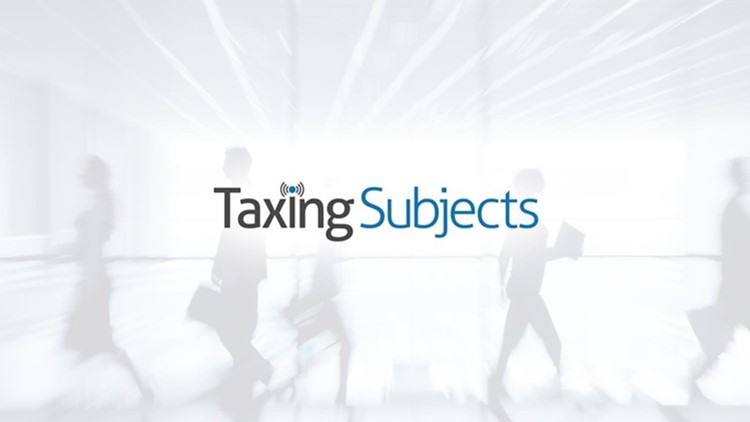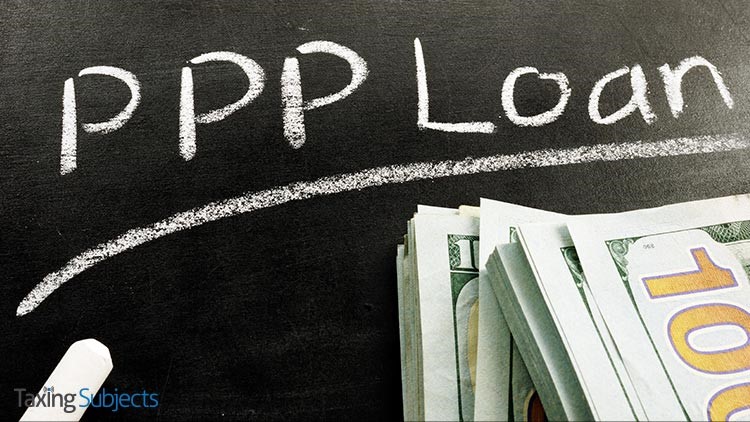by | Jun 12, 2020 | Tax Tips and News
The American Institute of CPAs (AICPA) has requested the Internal Revenue Service “address the use of electronic options to interact with the IRS and electronically file income tax returns.”
The request comes in a letter the AICPA filed with the IRS recently. It acknowledges that while e-signature relief is needed in light of the COVID-19 pandemic, AICPA believes it’s important that a permanent solution is reached that will let taxpayers and tax pros “embrace the digital and global environment and move away from manual, paper-based processing.”
While the pandemic has led the IRS to temporarily allow its employees to accept e-signatures on documents related to examination and collection of tax liabilities, AICPA believes the IRS should expand e-signature relief and make it permanent.
It all goes back to the Internal Revenue Code.
The Internal Revenue Code (IRC) requires any tax return, statement, or other document be signed in accordance with forms or regulations prescribed by the Secretary of the Treasury.
Legislation also has directed the Secretary to develop procedures for acceptance of signatures in electronic form. In addition, the Secretary may waive the requirement of a signature on an electronically filed tax return, or provide for alternative methods of signing.
“We appreciate the care taken to safely re-open the IRS offices and understand why the IRS has encouraged taxpayers to use electronic options to interact with the IRS and to e-file income tax returns. However, in the interest of the health and safety of taxpayers, tax professionals, and IRS employees, we urgently request that the IRS update its e-signature guidance and authentication requirements,” AICPA’s letter states.
What is the AICPA’s plan for e-signatures?
The Institute has requested that the IRS modify the e-signature program and identity authentication requirements in four key areas:
- Expand use of Taxpayer Electronic Signatures
- Rely on IRM for Identity Authentication of Taxpayers by Electronic Return Originators (EROs)
- Expand Notice 2007-79
- Expand Notice 2004-54
“In the interest of the health and safety of taxpayers, tax professionals, and IRS employees, we recognize the need to update the federal e-signature guidance and authentication requirements relating to standard filing procedures,” said AICPA Vice President of Taxation, Edward Karl, CPA, CGMA. “These measures will simplify the tax filing process while ensuring the safety and security of taxpayer information is maintained.”
– Story provided by TaxingSubjects.com
by | Jun 11, 2020 | Tax Tips and News
If any of your clients are one of the 4 million filers set to receive their Economic Impact Payment as a Visa prepaid debit card, they may be interested in one of the latest Internal Revenue Service press releases. The announcement covers a number of topics related to the new EIP Card Program, including some of the questions most frequently asked by EIP recipients.
What is an EIP Card?
An EIP Card is a Visa prepaid debit card that arrives in a “plain envelop from ‘Money Network Cardholder Services.’” The IRS made a point of explaining that users will not be charged a fee for normal use, like retail purchases, ATM withdrawals, and bank account transfers. Likewise, there won’t be a fee for using the Money Network mobile app or customer service number to check the card balance.
What are the most frequently asked questions for EIP Card holders?
Many taxpayers want to know if they are able to ask the Treasury to send their Economic Impact Payment to an existing prepaid card. The answer depends on a few factors:
- Is your payment already on the way?
- Can you “reload” funds on your current prepaid card?
- Does your prepaid card have an account number and routing number?
Obviously, a payment that has already been sent can’t be loaded onto a prepaid card by the Treasury prior to being received by the filer. As for whether the Treasury can put the money on your current prepaid card, the agency says that’s possible if it has an associated account number and routing number.
“You would need to check with the financial institution to ensure your card can be re-used and to obtain the routing number and account number, which may be different from the card number,” the IRS explained. “If you obtained your prepaid debit card through the filing of a federal tax return, you must contact the financial institution that issued your prepaid debit card to get the correct routing number and account number.” However, the IRS said you can’t use the account number and routing number listed on a recently filed tax return.
Other taxpayers simply wanted to know if they could request their payment could be issued on an EIP card. Unfortunately, the IRS said, “not at this time.”
To read other EIP frequently asked questions, visit IRS.gov. And for more information about EIP Cards, check out EIPCard.com.
Source: IR-2020-105
– Story provided by TaxingSubjects.com
by | Jun 9, 2020 | Tax Tips and News
Individual taxpayers and corporations have some extra breathing room for paying their 2020 estimated taxes. The IRS reminds individuals and corporations alike that the estimated tax payments normally due on April 15 and June 15 have been pushed back to July 15, without penalty.
An IRS news release says the shift came in response to the COVID-19 pandemic.
“This relief applies to federal income tax returns and tax payments (including tax on self-employment income) otherwise due April 15, 2020. This relief does not apply to state tax payments or deposits or payments of any other type of federal tax.”
Who needs to pay quarterly estimated tax?
Most often, self-employed taxpayers need to pay quarterly installments of estimated tax. This is especially true of those engaged in the sharing or “gig” economy. A substantial part of their income isn’t subject to withholding. Other income not subject to withholding includes interest, dividends, capital gains, alimony, and rental income.
Some taxpayers are under special rules: Farmers, fishermen, casualty and disaster victims, those who recently became disabled, recent retirees, and those whose income is uneven during the course of the year all are governed by special rules.
For self-employed taxpayers, underpaying taxes is a very real problem. They can avoid a penalty for underpaying by either owing less than $1,000 at tax time, or by paying most of their taxes during year. In 2020, that means making payments of at least 90% of the tax expected on their 2020 return.
The IRS likes to say that income taxes are pay-as-you-go. That means taxpayers need to may most of their taxes during the year as income is received. There are two ways to do that:
- Withholding from pay, pension or certain government payments such as Social Security; and/or
- Making quarterly estimated tax payments during the year.
How do I estimate tax withholding?
If a taxpayer has salaries and wages to report, they can avoid having to pay estimated taxes by asking their employer to withhold more tax from their earnings. They would file a new Form W-4 to do this.
For the taxpayers who receive a paycheck, the IRS Tax Withholding Estimator can help them make sure the right amount of tax is being withheld from their pay.
The Estimator is now more mobile-friendly than before. This tool offers workers—as well as retirees, self-employed taxpayers and others—a clear, step-by-step method for checking their withholding. It protects against having too little tax withheld and thus facing an unexpected tax bill or penalty at tax time next year.
When it comes to actually paying estimated taxes, Form 1040-ES, Estimated Tax for Individuals, includes instructions to help taxpayers figure their estimated taxes. To pay electronically, check out IRS.gov/payments.
The IRS offers two free electronic payment options. Direct Pay allows taxpayers to schedule their estimated federal tax payments up to 30 days in advance. The Electronic Federal Tax Payment System (EFTPS) allows payments up to 365 days in advance.
Help for estimated taxes is available on IRS.gov. For example, taxpayers can search the Interactive Tax Assistant, Tax Topics, Frequently Asked Questions, and Tax Trails to get answers to common questions.
Source: IR-2020-117
– Story provided by TaxingSubjects.com
by | Jun 8, 2020 | Tax Tips and News
The American Institute of CPAs (AICPA) is encouraging small businesses to apply for Paycheck Protection Program (PPP) loans ahead of the June 30th deadline. The Institute sees the recently signed PPP Flexibility Act as a “critical, positive step for small business and the nation’s economy.”
The PPP Flexibility Act includes a number of key provisions:
- Allows forgiveness for expenses beyond the 8-week covered period to 24 weeks;
- Extends the timeframe to restore employee levels to Dec. 31, 2020;
- Increases the current limitation on nonpayroll expenses (such as rent, utility payments and mortgage interest) for loan forgiveness from 25% to 40%;
- Allows new borrowers five years to repay loan instead of two; existing PPP loans can be extended up to five years if lender and borrower agree; and
- Ensures full access to payroll tax deferment for businesses that take PPP loans.
The AICPA’s website has an additional summary of the Act’s main points.
The Institute’s leadership says it’s behind the PPP loans because they help a vital sector of the American economy: small business.
“CPA firms have worked tirelessly to help their small business clients understand, as best possible, the PPP’s policies and apply for financial relief,” said Mark Koziel, CPA, AICPA executive vice president of firm services. “Some small businesses may have hesitated to apply for PPP funds because of challenges with the old forgiveness rules. We encourage CPA firms to share how the PPP Flexibility Act greatly improved these rules, which may help more small businesses apply for relief.”
An economy on the mend?
Erik Asgeirsson, CEO and president of CPA.com, said recent unemployment numbers provided a measure of optimism on the “significant” impact the PPP program is having in retention and rehiring of workers.
“Over the past two months, the 44,000 CPA firms tied to the AICPA have played a critical role in delivering this needed business relief to their clients. We are going to continue to work with the AICPA-led coalition to help answer new questions related to these recent changes,” Asgeirisson said.
AICPA says it’s been a strong advocate for giving small business better flexibility and guidance on the use of PPP funds. Institute posts have noted that recent PPP guidance left a lot of unanswered questions and didn’t provide enough flexibility for loan recipients. This made it tough for small businesses — and the CPA firms that advise them — to make critical decisions.
AICPA has created a loan-forgiveness calculator to give small business a commonly accepted approach to PPP loan forgiveness. It was built with the input from AICPA’s small-business funding coalition. The group’s members provide services and support to businesses that employ more than 75 million people in total.
– Story provided by TaxingSubjects.com
by | Jun 5, 2020 | Tax Tips and News
The Internal Revenue Service is temporarily allowing taxpayers who participate in certain retirement plans—or their beneficiaries—to make participant elections electronically.
Normally, signatures of the individual making the election have to be witnessed in the physical presence of a plan representative or notary public. This requirement extends to those making a spousal consent, in order to satisfy “the physical presence requirement.”
The IRS says it has issued guidance that allows remote signature in cases where security procedures are in place:
“Notice 2020-42 (PDF) provides participants, beneficiaries, and administrators of qualified retirement plans and other tax-favored retirement arrangements with temporary relief from the physical presence requirement for any participant election (1) witnessed by a notary public in a state that permits remote notarization, or (2) witnessed by a plan representative using certain safeguards,” an IRS statement reads.
The new guidance accommodates local shutdowns and social distancing practices and is intended to facilitate payments of COVID-19-related distributions, as well as plan loans to qualified participants, when permitted by the CARES Act.
What is the new IRS guidance for electronic participant elections from retirement plans?
The IRS guidance says in the case of a participant election witnessed by a notary public during calendar year 2020, the taxpayer can use an electronic system to make the remote notarization if it is carried out via live audio-video technology that satisfies requirements of participant elections and is consistent with state law pertaining to notary publics.
Cases involving participant elections witnessed by a plan representative are also given the green light for electronic signing, provided the system uses the same live audio-video technology. But the IRS says there are other requirements to be met as well in this second case:
- The individual must be effectively able to access the electronic medium used to make the participant election;
- The electronic system must be reasonably designed to preclude any person other than the appropriate individual from making the participant election;
- The electronic system must provide the individual making the election with a reasonable opportunity to review, confirm, modify, or rescind the terms of the election before it becomes effective; and
- The individual making the election, within a reasonable time, must receive confirmation of the election through either a written paper document or an electronic medium under a system that satisfies the applicable notice requirements.
For additional information, check out the web page on tax relief for those affected by the COVID-19 pandemic on IRS.gov.
Source: IR-2020-110
– Story provided by TaxingSubjects.com





